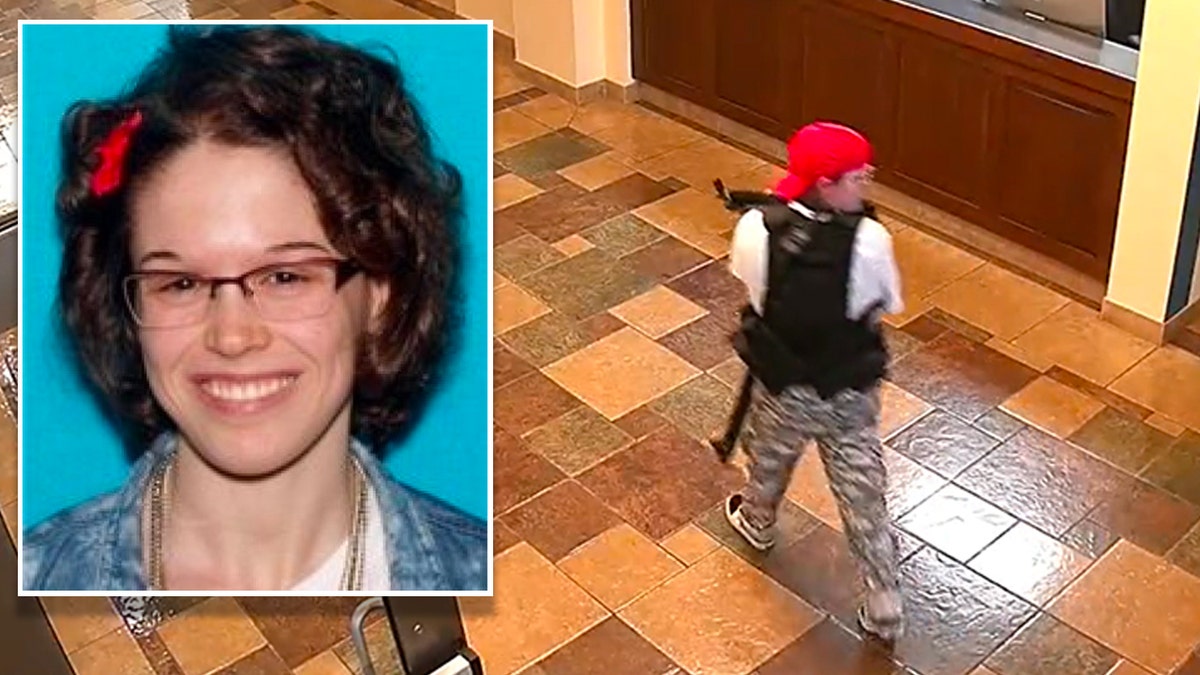Florida's Response To School Shooters: Evaluating Lockdown Effectiveness Across Generations

Table of Contents
Historical Context of School Lockdown Procedures in Florida
Florida's approach to school safety has evolved significantly in response to tragic events. Following high-profile shootings, the state has implemented numerous changes to its security protocols, reflecting a continuous effort to improve response mechanisms. This evolution involves multiple stakeholders: the state government, individual school districts, law enforcement agencies, and educational professionals. The interplay between these groups is crucial in shaping the effectiveness of lockdown procedures.
- Timeline of significant changes in Florida's school safety regulations: Post-Columbine, Florida saw initial increases in security measures. More substantial changes followed the tragic events at Sandy Hook and more recently, at Marjory Stoneman Douglas High School in Parkland, leading to legislation such as the Marjory Stoneman Douglas High School Public Safety Act.
- Key legislation impacting lockdown procedures: The aforementioned Public Safety Act mandated significant changes, including increased mental health resources, armed school resource officers, and enhanced active shooter training for staff and students.
- Evolution of training protocols for staff and students: Training has shifted from basic lockdown drills to more comprehensive active shooter response training, encompassing threat assessment, communication protocols, and evacuation strategies. This includes age-appropriate training for different age groups.
Lockdown Effectiveness in Elementary Schools
Lockdowns in elementary schools present unique challenges. Young children are particularly vulnerable during active shooter events due to their limited understanding of complex situations and their reliance on adults for guidance and protection. Effective communication and age-appropriate training become paramount.
- Effectiveness of lockdown drills in elementary schools based on available data: While data on specific lockdown success rates in elementary schools is often limited due to privacy concerns, anecdotal evidence and expert opinion suggest that consistent, age-appropriate drills significantly improve response capabilities.
- Challenges in communicating effectively with young children during a crisis: Simple, clear instructions and reassurance are vital. Using age-appropriate language and visual aids can improve comprehension during stressful events.
- Specific training needs for elementary school staff: Staff require comprehensive training in de-escalation techniques, child psychology, and crisis communication specific to young children.
Lockdown Effectiveness in Middle and High Schools
Middle and high schools present a different set of challenges. The increased mobility and independence of older students make managing a lockdown more complex. However, older students also have the potential to play a more active role in threat assessment and response.
- Comparative analysis of lockdown success rates across age groups: While direct comparisons are difficult, evidence suggests that older students may be more likely to understand and follow complex instructions during a lockdown, potentially leading to improved overall effectiveness. However, challenges related to student behavior and communication remain.
- Challenges posed by student mobility and behavior in older age groups: Managing larger numbers of students with diverse personalities and behaviors presents challenges during a lockdown. Clear communication, consistent enforcement of rules, and pre-emptive strategies are vital.
- The role of peer-to-peer support during a crisis: Training older students in peer support can enhance resilience and improve response capabilities. Mentorship programs and peer-led initiatives could prove valuable in emergency situations.
Generational Differences in Response to Lockdown Drills
Generational differences influence the perception and response to lockdown drills. Millennials and Gen Z, having grown up in an era of increased awareness of school shootings and readily available information through social media, might have different perspectives and emotional responses compared to previous generations.
- Survey data or studies on student perceptions of lockdown drills: Research is needed to fully understand how different generations perceive and respond to drills, including the frequency and impact on mental health.
- The role of social media in spreading information (and misinformation) during emergencies: Social media can be a double-edged sword. While it can facilitate rapid information dissemination, it can also amplify misinformation and anxiety.
- Mental health implications for students participating in frequent lockdown drills: The repeated exposure to lockdown drills can contribute to anxiety, PTSD, and other mental health challenges. The need for appropriate mental health support is paramount.
Improving Lockdown Effectiveness: Recommendations and Future Directions
Improving lockdown effectiveness requires a multi-faceted approach. This includes improvements to training programs, communication protocols, technology integration, and a commitment to ongoing evaluation and adaptation.
- Specific recommendations for improving communication during lockdowns: Clear, concise, and consistent communication strategies are vital. This includes the use of multiple communication channels, regular testing of emergency communication systems, and providing staff with appropriate training.
- Suggestions for enhancing the effectiveness of lockdown drills: Regular, realistic drills tailored to specific age groups are necessary, along with post-drill debriefings to identify areas for improvement.
- Technological solutions that can enhance school safety and response: Technology such as security cameras, alert systems, and communication apps can play a significant role in enhancing school safety and improving response times during emergencies.
Conclusion: Florida's Response to School Shooters: A Call for Continued Improvement
In conclusion, evaluating Florida's response to school shooters requires a nuanced understanding of lockdown procedures across different age groups and the impact of generational differences. While progress has been made, continuous improvement is necessary. Addressing mental health concerns, refining training protocols, and leveraging technology are crucial steps in creating safer and more resilient school environments. We must remain committed to ongoing evaluation and adaptation to ensure that our schools are equipped to protect our students and staff. We encourage you to learn more about school safety initiatives in Florida and participate in the ongoing conversation about improving Florida's response to school shooters, and contributing to safer schools nationwide.

Featured Posts
-
 Seven Months Salary Bonus Singapore Airlines Rewards Staff
May 17, 2025
Seven Months Salary Bonus Singapore Airlines Rewards Staff
May 17, 2025 -
 News And Analysis Trumps Middle East Trip May 15 2025
May 17, 2025
News And Analysis Trumps Middle East Trip May 15 2025
May 17, 2025 -
 New In Kenya Uber One Membership Offers Discounts And Free Deliveries
May 17, 2025
New In Kenya Uber One Membership Offers Discounts And Free Deliveries
May 17, 2025 -
 United States Crypto Casinos Jackbits Position Among The Best
May 17, 2025
United States Crypto Casinos Jackbits Position Among The Best
May 17, 2025 -
 More Rides More Deliveries Uber Kenya Rewards Customers And Partners
May 17, 2025
More Rides More Deliveries Uber Kenya Rewards Customers And Partners
May 17, 2025
Latest Posts
-
 The Trump Family A Comprehensive Genealogy
May 17, 2025
The Trump Family A Comprehensive Genealogy
May 17, 2025 -
 Jalen Brunsons Reported Frustration Impact On Wwe Raws Cm Punk Seth Rollins Match
May 17, 2025
Jalen Brunsons Reported Frustration Impact On Wwe Raws Cm Punk Seth Rollins Match
May 17, 2025 -
 Will Jalen Brunsons Absence Affect Next Weeks Cm Punk Vs Seth Rollins Raw Bout
May 17, 2025
Will Jalen Brunsons Absence Affect Next Weeks Cm Punk Vs Seth Rollins Raw Bout
May 17, 2025 -
 Jalen Brunsons Displeasure Will He Miss Cm Punk Vs Seth Rollins On Raw
May 17, 2025
Jalen Brunsons Displeasure Will He Miss Cm Punk Vs Seth Rollins On Raw
May 17, 2025 -
 Zhittya Ta Spadschina Meri Enn Maklaud Materi Donalda Trampa
May 17, 2025
Zhittya Ta Spadschina Meri Enn Maklaud Materi Donalda Trampa
May 17, 2025
